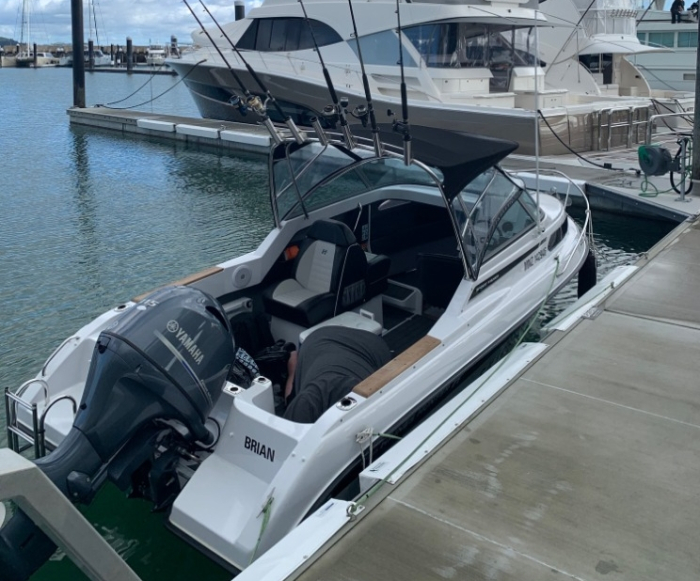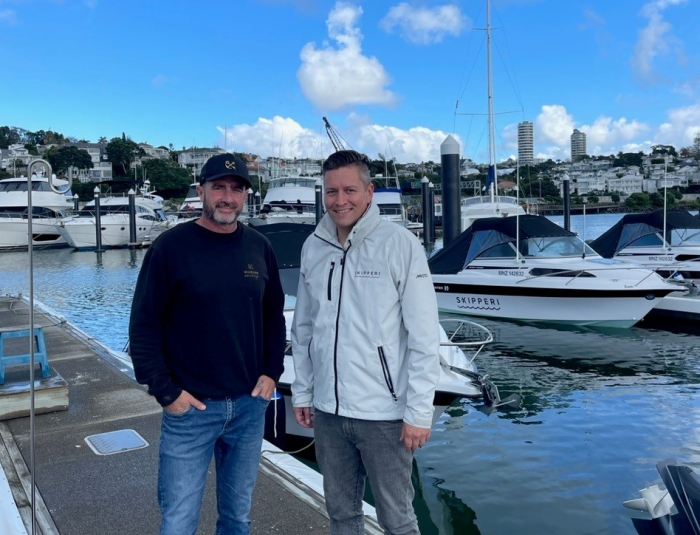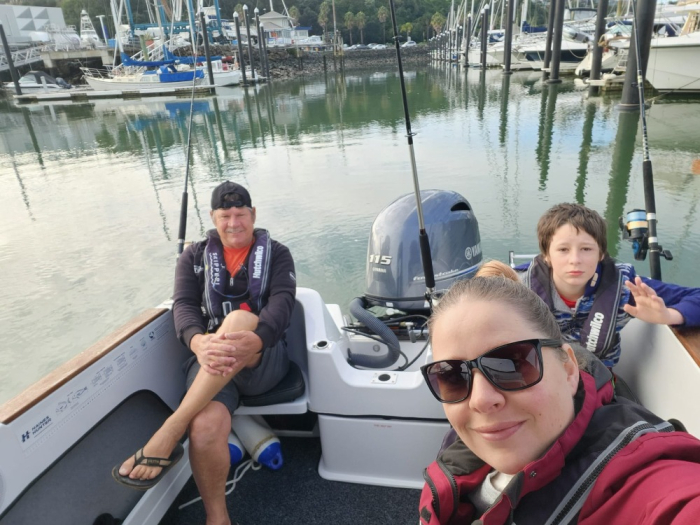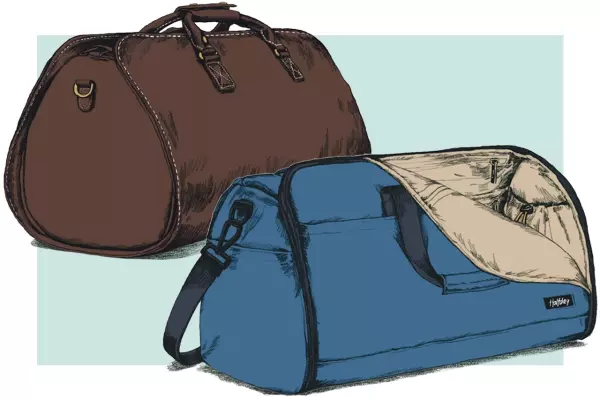Hanging over the side of a boat, feeding fish, is no fun. Trust me. I know.
I’ve done this often in my 43 years. Going boat riding, playing first-person shooter games, rides at theme parks or even sitting with my back facing the way a train is travelling have been a no-go for me.
Until recently, I’ve suffered from severe motion sickness. Nothing has worked.
Adventures at sea
But having now lived in the City of Sails for nearly seven years, my heart yearned for a new adventure on the open sea.
The only problem, of course, was that aside from my world spinning out of control for hours on end as mentioned already, I knew next to nothing about boats.
Not how they worked, how to drive them, how to launch them or even how to navigate all the many hazards once you’re actually among other boaties, reefs, buoys and so on.
Just thinking about it made my head hurt. Well, a little more than usual.
So, when I came across the recent call for better and more formal boating education, I made the spur-of-the-moment decision that I’d buy myself a boat and learn the ways of the pirate and captain of the seas.
My thinking was that there (a) must be a cure for motion sickness, and (b) that I could buy a cheap second-hand boat on Trade Me or Facebook Marketplace.
But yeah, you’ve guessed it, I was (as usual) an idiot.
Having looked at the dozens of boats for sale that I could afford, I quickly realised that I’d more than likely put my life and the lives of my family at risk if I bought anything other than a new boat. But, have you seen what a new boat costs?
Yeah, I don't have that kind of money. I’m a journalist, remember …
A quick calculation and I worked out a new six-metre boat could cost about $60,000 to $120,000. Then you have insurance, maintenance costs and – depending on whether you want to launch and retrieve the boat every time – marina berth costs as well. I don't have $3,000 to $4,000 a month for this kind of hobby.
And let’s be honest, even if I did, there was still the lingering question of whether I’d be able to cure my motion sickness.
My theory, at least in my mind, was that if I couldn’t find meds that alleviated motion sickness, I should be able to cure myself by forcing my body to adapt to the motion of the ocean. Well, yes, again, I’m a journalist, not a bloody scientist. At least give me an A for effort…
Ask anybody who knows me and they’ll happily tell you I’m as stubborn as a mule. I was getting out on the water one way or the other, even if it killed me (not as in death, although having motion sickness feels akin to dying).
I ended up investigating other options, but they all came back as way too expensive. 
Brian, one of the boats in Skipperi's fleet at Half Moon Bay marina. (Image: Jacques Steenkamp)
Skipperi
However, thanks to Mark Zuckerberg’s lovely stalker bots and algorithms working behind the scenes on our phones and computers, an offer for a three-month trial to join the Finnish-founded boat-sharing startup, founded in 2017 and called Skipperi, popped up on my newsfeed.
It wasn’t the first time that I’ve considered Skipperi. I had previously thought about joining, but the idea of committing to a 12-month contract and not knowing whether I’d even be able to drive a boat and remain standing dissuaded me.
But three months was something I could commit to.
So, first, like all good husbands are required to do, I asked (really more like told a couple of white lies to) the Mrs for “permission”.
Her honest reaction, much to my chagrin? Laughter. Deep-belly, ridiculous, tear-streaming laughter. Yeah, she knows me too well.
Pfft, women, I know. Where’s the faith and trust that I could do this?
Ignoring my wife’s unacceptable ridicule and armed with my token stubbornness, I went ahead and signed up to Skipperi.
However, it didn’t take long for doubt to start creeping in when I was faced with answering questions about my boating experience and boating-club associations.
Does feeding the fish on every previous excursion count? Probably not.
The great thing about Skipperi, which I soon found out, was that included in the monthly fee was your tuition for the Coastguard’s day-skipper course along with at least three hours of practical training.
This was mandatory for everyone before being allowed to hit the water solo.
You’re given 12 weeks to complete the day-skipper course; I did it in a day – it's not hard.
You’re given interactive modules to work through with a corresponding multiple-choice questionnaire to pass after each.
The downside, at least to my mind, is that it’s easy to cheat because the system spits out the answers at the end of each test and if you’ve failed, you only have to wait 30 minutes to try again. Same questions, same answers, you do the math.
However, despite that little drawback in what I consider to be a must for anyone going out on the water, I found the information imparted to be invaluable.
I honestly didn’t know 90% of what I learned, and I consider myself to be somewhat intelligent and well-read. It changed my perspective on boating and water safety forever.
It also explained a lot.
I’ve read about numerous boating incidents over the years, and the fact that New Zealand doesn’t have minimum requirements such as a skipper’s licence boggles the mind.
How can we expect someone to have a driver’s licence or even a forklift licence but at the same time allow anyone over the age of 16 to get behind the wheel of a boat without any training or prior knowledge to risk their lives and the lives of others?
Come on, people, surely being on a boat can be more dangerous than driving a car (at least in my opinion) ...
Scopoderm
Anyway, back to my tale.
After successfully passing the day-skipper course, I was booked in to meet with one of Skipperi’s trainers to do my practical.
This would involve a tutorial on their locally manufactured Haines Hunter boats, how their app worked, going out into the harbour and, most importantly, how to bloody park the boat at its berth.
I was ready, albeit nervous. My concern? Feeding those damn fish, again.
Surely, Skipperi wasn’t going to allow me access to their boats if I couldn’t remain upright and in control.
Therefore, I turned to my old mate Zuckerberg’s fishing and boating forums in search of salvation.
And yes, I eventually found it in the form of the often sold-out and hard-to-find Scopoderm patches (not an endorsement, by the way, just letting you know what eventually worked for me).

A combo of these two "cured" me of motion sickness. (Image: Jacques Steenkamp)
For my practical, I used both patches as opposed to the recommended one. That, and a couple of Sea-Legs tablets just to be sure. I was not going down with that boat.
I figured I’m an extreme case, a big guy and overly desperate. But lo and behold, those little expensive adhesive circles of joy worked, and have done so ever since.
Goodbye, human burley trail, and hello, Captain Jack Sparrow.
I studied up on the Skipperi manual, went over the modules from the day-skipper course (several times), watched some YouTube videos on how to drive and park a boat (don’t be judgy), and tsumanied through the practical.
Despite my trainer’s offer of more training if I required it, I felt confident I’d be able to brave the Hauraki Gulf’s waters.
Well, "confident" might be a tad too ambitious. I was as ready as I was ever going to be. And honestly, just so damn relieved those patches worked.
I mean really, really worked. Take that, Mrs Steenkamp.
The how-to
It might be worth explaining who and what Skipperi actually is.
Founded in Finland as a fast-growing boating startup with “a mission to make boating simple, sustainable and for everyone”, the company has operations in various European countries, Canada and also NZ.
Basically, you can join the service to get unlimited access to a boat for either $310 a month, which gives you access Monday to Friday, or $529, which includes weekends.
Their current fleet of 24 boats can be located at both the Westhaven and Half Moon Bay marinas, with Gulf Harbour marina soon to be added and bigger boats not far away.
The current fleet limits how far out you can actually go with the Skipperi boats, but with the promise of larger craft on the horizon comes the opportunity to travel farther afield to Great Barrier Island and the like. Did someone say tuna fishing?
Once you’ve subscribed to the service, you have access to their app, which allows you to reserve a boat at any time.
It’s then as simple as rocking up to your boat at its berth, using the app to check in, and off you go. Your only responsibility, other than the obvious, is to ensure you fill the petrol tank (you’ll always find the fuel tank full on check-in), to give the boat a thorough clean and to check out via the app.
Considering how much a new boat costs, and the various associated hassles, I feel that $529 a month is a steal.
Also, a major plus in my book is not having to find a parking space for it or having to launch and retrieve it.
Coastguard education
During my discussions with Skipperi’s NZ director, Alexander Rosenthal, and fleet manager, Eric Haagh, it became apparent how much value they put in boating education.
Unlike many other countries that require skippers to be licensed, NZ doesn’t.
Both German-born Rosenthal and Haagh made it clear there was no question when they launched Skipperi in NZ a few years ago that subscribers were going to have to pass the day-skipper course as a minimum.
"We reckon it's a good idea to have a licence for boaties in New Zealand. We saw the necessity of it already in 2019 when we started out [in NZ] and decided to make it compulsory for our Skipperi community," Rosenthal says.
Haagh adds that the law around commercially renting boats in NZ says anyone over the age of 16 can rent a boat and that you only have to make them aware of the dangers in the area of operation.
"There's a lot of risk around that and that's the reason there aren't many rental boating companies in New Zealand because nobody wants to take that risk on.
"When we came together, we decided to create a safer boating community and not listen to Maritime New Zealand's rules but let's write our own rules that are way over the top," Haagh says.
"As a business study, if we manage the people, the boats aren't the problem."
Haagh says that's mainly because they look after their boats and by removing that problem, they can focus on educating their subscribers.
Meanwhile, Rosenthal adds that as of May, the company's subscribers had clocked over 15,000 hours of boating and had "very little need" of help from the Coastguard.
"In 15,000 hours of boating, we had five emergencies in over two years. Two of them were faulty engines and were fixed, one was a stuck anchor, which can happen to anyone, we had one fuel issue and we had a boat stranded on a beach after the tide went out," Rosenthal says.
"It makes us happy that the idea from the beginning came to fruition."
Many other boaties I’ve spoken to also agree that a lack of boating education is the ongoing cause of fatalities on NZ waters that could easily be avoided.

Skipperi’s fleet manager, Eric Haagh, and NZ director, Alexander Rosenthal. (Image: Skipperi)
However, what I’ve discerned from the boating community in NZ is a concern that bureaucracy will get in the way of a viable solution.
One of the suggestions which makes the most sense to me is that the day-skipper course should become a legal requirement for any and all boat owners and that this should be managed by the Coastguard, given that the revenue this will generate would greatly benefit the national charity organisation and its army of volunteers.
The organisation recently called for the urgent passing of legislation to make it mandatory to wear life jackets on vessels under six metres. But this needs to go further and include mandatory boating education.
Coastguard NZ’s chief executive, Callum Gillespie, says they’re “supportive of encouraging education in the boating community and we will work constructively with the Ministry and Maritime NZ on this”.
Here’s hoping their call is heard loud and clear in the halls of government.
However, Rosenthal tells me that each Skipperi boat not only has six life jackets aboard but they ask that everyone wears them at all times.
"It's part of our subscribers' contract. We want people to wear life vests and not just have them on the boat and think of them once it's too late," he says.
As an added bonus and despite all the safety precautions Skipperi already has in place, it also offers a 24/7 customer operations number in case of emergencies.
And in my experience, it's usually Haagh on the other end patiently helping me problem-solve a silly mistake such as not turning on the batteries or when the kill switch disengaged from the throttle and the boat failed to start. While I usually panicked, he just chuckled and calmly explained what I should do.
"Just remember you're not alone out there," Rosenthal says.
He adds that Skipperi members automatically have access to Coastguard membership which is an added bonus and level of safety.
The boating experience
My first boat ride out into the gulf as a skipper was terrifying. But armed with my recently acquired boating education, everything seemingly made sense.
I understood what the different markers meant, where I could anchor the boat, what areas to avoid, at what speed I could travel and – most important, especially with my wife and children onboard – what to do in an emergency.
None of these things would have come naturally to me had I not completed the day-skipper course and subsequent practical training.
However, I must admit I’ve also learned a lot along the way.
Chief among those is to always adhere to the Coastguard app’s weather forecast, especially when it says “rough seas”.
I found this out the hard way one afternoon when my father-in-law and I went out for what we assumed would be a quick fishing trip. It was anything but. Rough seas mean rough-don’t-go-out-or-drown seas.
I can’t recall when last I was so terrified, as the boat was thrown around between the cascading waves. Luckily, my mother didn’t raise a fool, and instead of tempting fate, I turned tail and hobbled back to the marina.
It took forever, and I was sure the boat was going to be overturned a couple of times, but we were wearing our life jackets and the VHF radio was turned to channel 16 in case I had to call for help.
Since that day, and thanks to avoiding “rough seas”, I’ve been out about a dozen times.

My wife, Nadia, youngest son, Jared, and father-in-law, Kobus. (Image: Jacques Steenkamp)
With each trip my confidence grows, and bar terrible weather, my next excursion will be to the famed Anchorite Rock, where I hope to land my first legal-sized kingfish.
I can even now park the boat in one go, in contrast to my first attempt at getting out of the berth which took several minutes and what I assumed was lots of laughter from any onlookers (hopefully nobody recorded it to gain viral-video fame).
As a family, we’ve managed to see a side of Auckland that we had missed out on for years. We’ve been exploring the islands and catching fish.
In short, we’ve been making beautiful, family-bonding memories.
Boating is expensive, yes, but with options such as Skipperi, it’s accessible. Just ensure that you know what you’re doing.
I can’t force you to do the Coastguard’s day-skipper course, but I implore you to.
You may argue it’s your right as a New Zealander to access the water, but how about you do that in a responsible and considerate manner?
* Jacques Steenkamp signed up for the three-month Skipperi trial at his own expense.














